
The United States Capitol, often called the Capitol or the Capitol Building, is the seat of the United States Congress, the legislative branch of the federal government. It is located on Capitol Hill at the eastern end of the National Mall in Washington, D.C. Although no longer at the geographic center of the national capital, the U.S. Capitol forms the origin point for the street-numbering system of the district as well as its four quadrants. Like the principal buildings of the executive and judicial branches, the Capitol is built in a neoclassical style and has a white exterior.

The National Statuary Hall is a chamber in the United States Capitol devoted to sculptures of prominent Americans. The hall, also known as the Old Hall of the House, is a large, two-story, semicircular room with a second story gallery along the curved perimeter. It is located immediately south of the Rotunda. The meeting place of the U.S. House of Representatives for nearly 50 years (1807–1857), after a few years of disuse it was repurposed as a statuary hall in 1864; this is when the National Statuary Hall Collection was established. By 1933, the collection had outgrown this single room, and a number of statues are placed elsewhere within the Capitol.

The National Statuary Hall Collection in the United States Capitol is composed of statues donated by individual states to honor persons notable in their history. Limited to two statues per state, the collection was originally set up in the old Hall of the House of Representatives, which was then renamed National Statuary Hall. The expanding collection has since been spread throughout the Capitol and its visitor center.
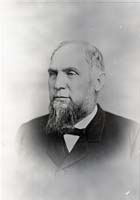
George Washington Glick was the ninth Governor of Kansas.

Charles Henry Niehaus was an American sculptor.
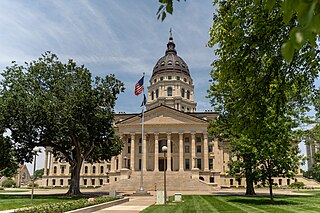
The Kansas State Capitol, known also as the Kansas Statehouse, is the building housing the executive and legislative branches of government for the U.S. state of Kansas. Located in the city of Topeka, which has served as the capital of Kansas since the territory became a state in 1861, the building is the second to serve as the Kansas Capitol. During the territorial period (1854–1861), an earlier capitol building was begun but not completed in Lecompton, Kansas, and smaller structures in Lecompton and Topeka were where the territorial legislatures met.

The United States Capitol building features a central rotunda below the Capitol dome. Built between 1818 and 1824, the rotunda has been described as the Capitol's "symbolic and physical heart".
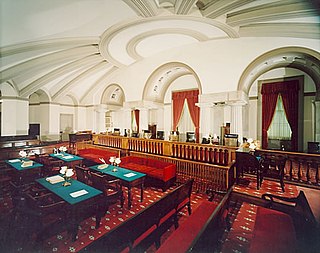
The Old Supreme Court Chamber is the room on the ground floor of the North Wing of the United States Capitol. From 1800 to 1806, the room was the lower half of the first United States Senate chamber, and from 1810 to 1860, the courtroom for the Supreme Court of the United States.

The Revolutionary War Door is an artwork by American sculptor Thomas Crawford, located on the United States Capitol House of Representatives wing east front in Washington, D.C., United States. This sculptured door was surveyed in 1993 as part of the Smithsonian's Save Outdoor Sculpture! program.

The United States Capitol cornerstone laying was the Freemasonry ceremonial placement of the cornerstone of the United States Capitol on September 18, 1793. The cornerstone was laid by president of the United States George Washington Leder of the Lodge of the Continental Army, assisted by the Grand Master of Maryland Joseph Clark, in a Masonic ritual.

Ronald Reagan is a bronze sculpture depicting the American politician of the same name by Chas Fagan, installed at the United States Capitol's rotunda, in Washington, D.C., as part of the National Statuary Hall Collection. The statue was donated by the U.S. state of California in 2009, and replaced one depicting Thomas Starr King, which the state had gifted in 1931. The statue stands on top of fragments from the Berlin Wall.

William Jennings Bryan is a bronze sculpture depicting the American politician of the same name by Rudulph Evans, which was installed in the United States Capitol's National Statuary Hall, in Washington, D.C., as part of the National Statuary Hall Collection. The statue was gifted by the U.S. state of Nebraska in 1937.
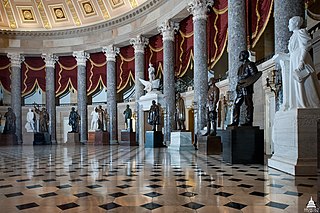
The National Statuary Hall Collection holds statues donated by each of the United States, portraying notable persons in the histories of the respective states. Displayed in the National Statuary Hall and other parts of the United States Capitol in Washington, D.C., the collection includes two statues from each state, except for Virginia which currently has one, making a total of 99.
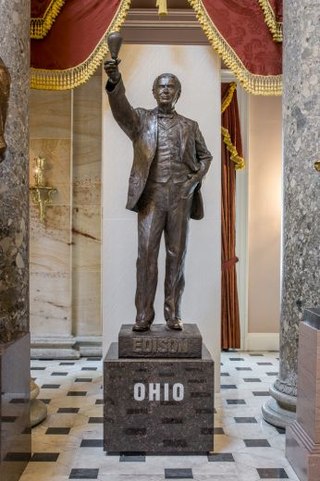
Thomas Edison is a bronze sculpture depicting the American inventor and businessman of the same name by Alan Cottrill, installed in the United States Capitol's National Statuary Hall, in Washington, D.C., as part of the National Statuary Hall Collection. The statue was gifted by the U.S. state of Ohio in 2016, and replaced one depicting William Allen, which had been donated in 1887.

Dwight D. Eisenhower is a bronze sculpture depicting the former U.S. president of the same name by Jim Brothers, installed in the U.S. Capitol's rotunda, in Washington, D.C., as part of the National Statuary Hall Collection. The statue was gifted by the U.S. state of Kansas in 2003, and replaced one depicting George Washington Glick.

John James Ingalls is a 1905 marble sculpture of the politician of the same name by Charles Henry Niehaus, formerly installed in the United States Capitol, in Washington, D.C., as part of the National Statuary Hall Collection. It was one of two statues donated by the state of Kansas. The statue was accepted in the collection by Senator Arthur P. Gorman on January 21, 1905. On July 27, 2022, it was replaced by a Statue of Amelia Earhart.
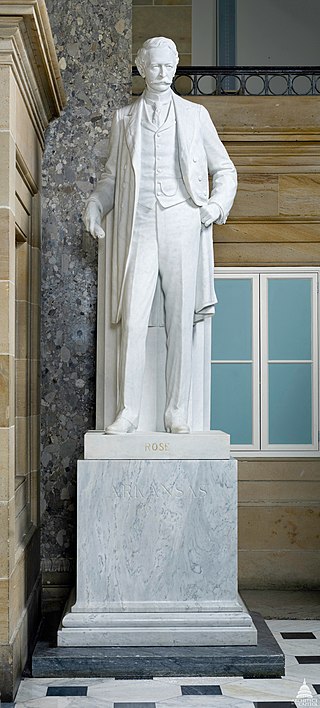
Uriah M. Rose, or Uriah Milton Rose, is a marble sculpture depicting the American lawyer of the same name by Frederick Ruckstull, formerly installed in the United States Capitol's National Statuary Hall, in Washington, D.C., as part of the National Statuary Hall Collection. The statue was gifted by the U.S. state of Arkansas in 1917.

Equal Visibility Everywhere, also known as EVE, is a non-profit 501(c)(3) organization based in Miami, Florida. EVE was founded in 2010 by the psychologist and former college professor Lynette Long, with the mission "to achieve gender parity in the monuments, symbols, and icons, of the United States." Its ongoing projects include adding more statues of women to the National Statuary Hall Collection, creating new historical markers honoring America's heroes, adding images of women to America's paper currency and coins, increasing the number of women honored on stamps and Google Doodles, and increasing the number of female character balloons in parades.

The statue honoring aviator Amelia Earhart was unveiled in the United States Capitol in Washington, D.C., representing Kansas in the National Statuary Hall Collection on July 27, 2022.
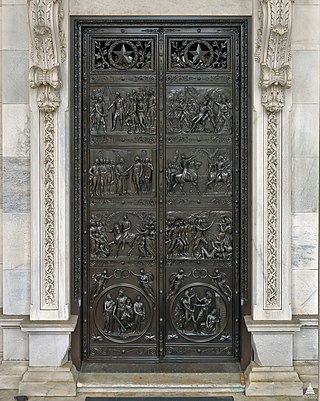
The George Washington and the Revolutionary War Door (1855–1868) is pair of a bronze sculptured doors to the Senate wing of the United States Capitol in Washington, D.C., United States. American sculptor Thomas Crawford designed and modeled the doors in the mid-1850s, but died prior to their completion. American sculptor William H. Rinehart completed the doors based on Crawford's designs.




















